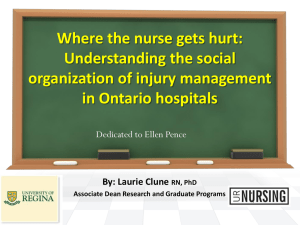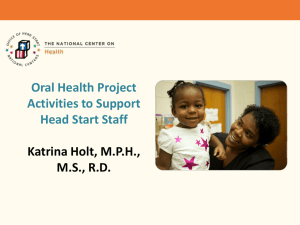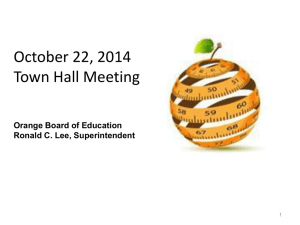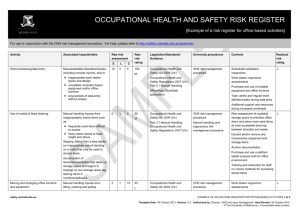Licensing/Regulatory Information
advertisement
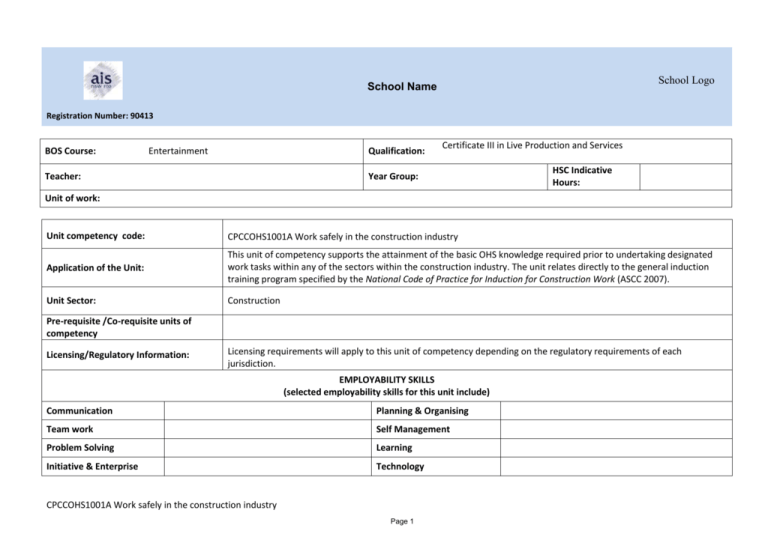
School Logo School Name Registration Number: 90413 BOS Course: Entertainment Qualification: Teacher: Certificate III in Live Production and Services Year Group: HSC Indicative Hours: Unit of work: Unit competency code: CPCCOHS1001A Work safely in the construction industry Application of the Unit: This unit of competency supports the attainment of the basic OHS knowledge required prior to undertaking designated work tasks within any of the sectors within the construction industry. The unit relates directly to the general induction training program specified by the National Code of Practice for Induction for Construction Work (ASCC 2007). Unit Sector: Construction Pre-requisite /Co-requisite units of competency Licensing/Regulatory Information: Licensing requirements will apply to this unit of competency depending on the regulatory requirements of each jurisdiction. EMPLOYABILITY SKILLS (selected employability skills for this unit include) Communication Planning & Organising Team work Self Management Problem Solving Learning Initiative & Enterprise Technology CPCCOHS1001A Work safely in the construction industry Page 1 Assessment Requirements and Advice: EVIDENCE GUIDE The evidence guide describes the underpinning knowledge and skills that must be demonstrated to prove competence. It is essential for assessment and must be read in conjunction with the performance criteria, the range statement and the assessment guidelines of the relevant Training Package. Guidance information for assessment Assessment must ensure: Critical aspects for assessment and evidence required to demonstrate competency in the unit Evidence of the following is essential: applicable OHS legislative and safety requirements for construction work including duty of care the range of common construction hazards and procedures for the assessment of risk and application of the hierarchy of control OHS communication processes, information and documentation including the role of OHS committees and representatives, the meaning of common safety signs and symbols, and procedures for reporting hazards, incidents and injuries general procedures for responding to incidents and emergencies including evacuation, first aid, fire safety equipment and PPE. Method of Assessment Context of and specific resources for assessment Assessment must ensure: Resources must be available to support the program including participant materials and other information or equipment related to the skills and knowledge covered by the program. It is recommended that the assessment tool designed specifically to support this unit of competency will provide consistency in assessment outcomes. Where applicable, physical resources should include equipment modified for people with disabilities Access must be provided to appropriate assessment support when required. Assessment processes and techniques must be culturally appropriate, and appropriate to the oracy, language and literacy capacity of the assessee and the work being performed In all cases where practical assessment is used it will be combined with targeted questioning to assess the underpinning knowledge. Questioning will be CPCCOHS1001A Work safely in the construction industry Page 2 A range of assessment methods should be used to assess practical skills and knowledge. The following examples are appropriate for this unit: Assessment methods may include more than one of the following: practical assessment oral questioning written test work-based activities simulated project based activity undertaken in such a manner as is appropriate to the oracy, language and literacy levels of the operator, any cultural issues that may affect responses to the questions, and reflecting the requirements of the competency and the work being performed. CPCCOHS1001A Work safely in the construction industry Page 3 Required skills: The following skills must be assessed as part of this unit: verbally report construction hazards and risks ask effective questions relay information to others discuss OHS issues and information comprehension skills to: explain the basic OHS legislative requirements which will be applicable to own work explain the meaning of safety signs and symbols identify common construction hazards discuss the basic principles of risk management. Required knowledge: The following knowledge must be assessed as part of this unit: applicable Commonwealth, State or Territory OHS legislation, regulations, standards, codes of practice and industry standards/guidance notes relevant to own work, role and responsibilities basic principles of risk management and assessment for construction work common construction hazards common construction safety signage and its meanings general construction emergency response and evacuation procedures general construction work activities that require licenses, tickets or certificates of competency general first aid response requirements general procedures for raising OHS issues general procedures for reporting OHS hazards, accidents, incidents, emergencies, injuries, near misses and dangerous occurrences general procedures for responding to hazards, incidents and injuries general workers' compensation and injury management requirements OHS hierarchy of controls OHS responsibilities and rights of duty holders, including: own responsibilities to comply with safe work practices relating to: persons in control of construction work/projects employers and self-employed persons supervisors employees designers inspectors manufacturers and suppliers housekeeping identification of hazards preventing bullying or harassment smoking use of amenities use of drugs and alcohol role of OHS committees and representatives CPCCOHS1001A Work safely in the construction industry Page 4 types of common personal protective equipment and fire safety equipment types of OHS information and documentation. CPCCOHS1001A Work safely in the construction industry Page 5 Assessment Strategies: Competency Assessment Task Assessment Validation: Use the AIS process of assessment validation; Group validation by accredited trainers for a package of assessment tasks during network meetings. Individual assessment task independently assessed by an AIS approved validation assessor. Validation by an Industry representative - formally and/or informally CPCCOHS1001A Work safely in the construction industry Page 6 Resources Commments Textbooks: Journals/ Magazine Websites: Other: BOS HSC Content (Section 3) Syllabus Document - Scope of learning for the HSC information on the industry (when required) Eg; Nature of the industry CPCCOHS1001A Work safely in the construction industry Page 7 HSC Hours CPCCOHS1001A Work safely in the construction industry Element of Competency /Performance Criteria 1. Identify OHS legislative requirements. 1.1 Applicable OHS legislative requirements relevant to own work, role and responsibilities are identified and explained. Range Statement Learning Experiences and Activities OHS legislative requirements Australian standards construction industry OHS standards and guidelines duty of care health and safety representatives, committees and supervisors licences, tickets or certificates of competency National Code of Practice for Induction Training for Construction Work national safety standards OHS and welfare Acts and regulations safety codes of practice. 1.2 Duty of care requirements are identified. 1.3 Own responsibilities to comply with safe work practices are identified and explained. Safe work Practices access to site amenities, such as drinking water and toilets general requirements for safe use of plant and equipment general requirements for use of personal protective equipment and clothing CPCCOHS1001A Work safely in the construction industry Page 8 Registration HSC Hours CPCCOHS1001A Work safely in the construction industry Element of Competency /Performance Criteria Range Statement 2. Identify construction hazards and control measures. 2.1 Basic principles of risk management are identified. Learning Experiences and Activities housekeeping to ensure a clean, tidy and safer work area no drugs and alcohol at work preventing bullying and harassment smoking in designated areas storage and removal of debris. Risk management assessing the risks involved consulting and reporting ensuring the involvement of relevant workers controlling the hazard identifying hazards reviewing to identify change or improvement Common construction hazards confined spaces electrical safety excavations, including trenches falling objects hazardous substances and dangerous goods HIV and other infectious diseases hot and cold working environments manual handling noise CPCCOHS1001A Work safely in the construction industry Page 9 Registration HSC Hours CPCCOHS1001A Work safely in the construction industry Element of Competency /Performance Criteria Range Statement 2.3 Measures for controlling hazards and risks are identified. Learning Experiences and Activities plant and equipment traffic and mobile plant unplanned collapse ultraviolet (UV) radiation working at heights. Measures for controlling risk elimination substitution isolation engineering control administrative control personal protective equipment. Risk likelihood of a hazard causing injury or harm Hazard any thing (including an intrinsic property of a thing) or situation with the potential to cause injury or harm. 3. Identify OHS communication and reporting processes. 3.1 OHS communication processes, information and documentation are OHS communication processes discussions with OHS representatives OHS meetings OHS notices, newsletters, bulletins and CPCCOHS1001A Work safely in the construction industry Page 10 Registration HSC Hours CPCCOHS1001A Work safely in the construction industry Element of Competency /Performance Criteria Range Statement identified and discussed. Learning Experiences and Activities correspondence OHS participative arrangements processes for raising OHS issues toolbox talks workplace consultation relating to OHS issues and changes. OHS documentation accident and incident reports Acts and regulations Australian standards codes of practice construction documentation and plans emergency information contact evacuation plans guidance notes job safety analyses labels material safety data sheets (MSDS) proformas for reporting hazards, incidents and injuries reports of near misses and dangerous occurrences risk assessments safe work method statements safety meeting minutes CPCCOHS1001A Work safely in the construction industry Page 11 Registration HSC Hours CPCCOHS1001A Work safely in the construction industry Element of Competency /Performance Criteria Range Statement 3.2 Role of designated OHS personnel is identified and explained. Learning Experiences and Activities site safety inspection reports. Designated OHS personnel first aid officers OHS committee members OHS representatives supervisors. 3.3 Safety signs and symbols are identified and explained. Safety signs and symbols emergency information signs (e.g. exits, equipment and first aid) fire signs (e.g. location of fire alarms and firefighting equipment) hazard signs (e.g. danger and warning) regulatory signs (e.g. prohibition, mandatory and limitation or restriction) safety tags and lockout (e.g. danger tags, out of service tags). 3.4 Procedures and relevant authorities for reporting hazards, incidents and injuries are identified. Relevant authorities emergency services (e.g. police, ambulance, fire brigade and emergency rescue) OHS regulatory authority supervisor. Incidents CPCCOHS1001A Work safely in the construction industry Page 12 Registration HSC Hours CPCCOHS1001A Work safely in the construction industry Element of Competency /Performance Criteria Range Statement Learning Experiences and Activities accidents resulting in personal injury or damage to property near misses or dangerous occurrences which do not cause injury but may pose an immediate and significant risk to persons or property, and need to be reported so that action can be taken to prevent recurrence, for example: breathing apparatus malfunctioning to the extent that the user's health is in danger collapse of the floor, wall or ceiling of a building being used as a workplace collapse or failure of an excavation more than 1.5 metres deep (including any shoring) collapse or partial collapse of a building or structure collapse, overturning or failure of the load bearing of any scaffolding, lift, crane, hoist or mine-winding equipment damage to or malfunction of any other major plant electric shock. electrical short circuit, malfunction or explosion CPCCOHS1001A Work safely in the construction industry Page 13 Registration HSC Hours CPCCOHS1001A Work safely in the construction industry Element of Competency /Performance Criteria Range Statement 4. Identify OHS incident response procedures. 4.1 General procedures for responding to incidents and emergencies are identified and explained. Learning Experiences and Activities uncontrolled explosion, fire or escape of gas, hazardous substance or steam any other unintended or uncontrolled incident or event arising from operations carried on at a workplace. General procedures basic emergency response (keep calm, raise alarm, obtain help) evacuation notification of designated OHS personnel and authorities notification of emergency services (e.g. when and how) referring to site emergency plans and documentation. Emergencies chemical spill fire injury to personnel structural collapse toxic and/or flammable vapours emission vehicle/mobile plant accident. CPCCOHS1001A Work safely in the construction industry Page 14 Registration HSC Hours CPCCOHS1001A Work safely in the construction industry Element of Competency /Performance Criteria 4.2 Procedures for accessing first aid are identified. 4.3 Requirements for the selection and use of relevant personal protective equipment are identified and demonstrated. 4.4 Fire safety equipment is identified and discussed. Range Statement Learning Experiences and Activities Personal protective equipment arm guards eye protection gloves hard hat hearing protection high visibility retro reflective vests protective, well fitting clothing respiratory protection safety footwear UV protective clothing and sunscreen. Fire safety equipment breathing apparatus fire blankets firefighting equipment. CPCCOHS1001A Work safely in the construction industry Page 15 Registration Unit Evaluation Teacher’s Comments: Summary of Student Comments: Competency Assessment Comments: Suggested improvements for course delivery: Additional / New Resources: Date Commenced: Signature: Date Completed: CPCCOHS1001A Work safely in the construction industry Page 16 Date:

